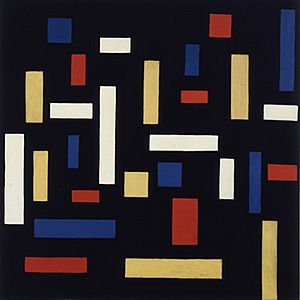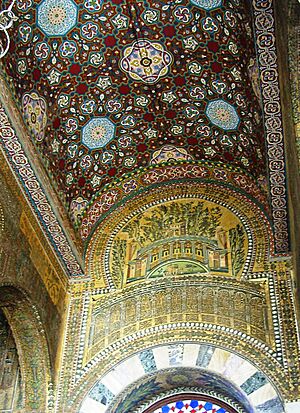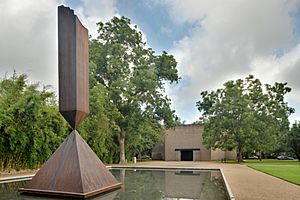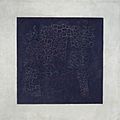Geometric abstraction facts for kids


Geometric abstraction is a type of abstract art. It uses simple shapes like squares, circles, and triangles. This art doesn't show things from the real world. Instead, it uses these shapes to create new designs.
Artists like Wassily Kandinsky, Kazimir Malevich, and Piet Mondrian were among the first to use this style. They explored how shapes and colors could create art without showing real objects.
Contents
What is Geometric Abstraction?
Geometric abstraction is a form of art that focuses on basic geometric shapes. These shapes are put together in ways that don't look like anything real. Think of it as art made from building blocks of lines, circles, and squares. The goal is to create feelings or ideas using only these pure forms.
A Look at History
This art style isn't just from the 20th century. Geometric patterns have been used for a very long time. Many cultures throughout history have used them. They appear in decorations and as art pieces.
For example, Islamic art often uses complex geometric patterns. This is because Islamic art usually avoids showing people or animals. These patterns were used in buildings and art for centuries. They helped connect ideas of spirituality, science, and art. This happened long before modern art movements in Europe.
Art and Music
Some artists think geometric abstraction is like music. Music can make you feel things without showing you a picture. Abstract art can do the same. It uses shapes and colors to create emotions.
Wassily Kandinsky wrote a lot about this connection. He felt that painting could be like composing music. He believed both could express deep feelings without needing to show real-world objects.
Different Kinds of Abstract Art
Not all abstract art is the same. Geometric abstraction is very structured and uses clear shapes. On the other hand, some abstract art is more about expressing feelings freely. For example, Jackson Pollock created art by dripping and splashing paint. This is called Expressionist abstract painting. It is very different from the precise nature of geometric abstraction.
Key Artists in Geometric Abstraction
Many famous artists have worked with geometric abstraction. They explored different ways to use shapes and colors. Some of these artists include:
- Josef Albers
- Theo van Doesburg
- Wassily Kandinsky
- Kazimir Malevich
- Piet Mondrian
- Barnett Newman
- Kenneth Noland
- Bridget Riley
- Alexander Rodchenko
- Sophie Taeuber-Arp
These artists helped shape how we see and understand abstract art today.
Related pages
Images for kids
-
František Kupka, Amorpha, Fugue en deux couleurs (Fugue in Two Colors), 1912, oil on canvas, 210 x 200 cm, National Gallery in Prague
-
Kazimir Malevich, Black Square, 1915, oil on linen, 79.5 x 79.5 cm, Tretyakov Gallery, Moscow
See also
 In Spanish: Abstracción geométrica para niños
In Spanish: Abstracción geométrica para niños





